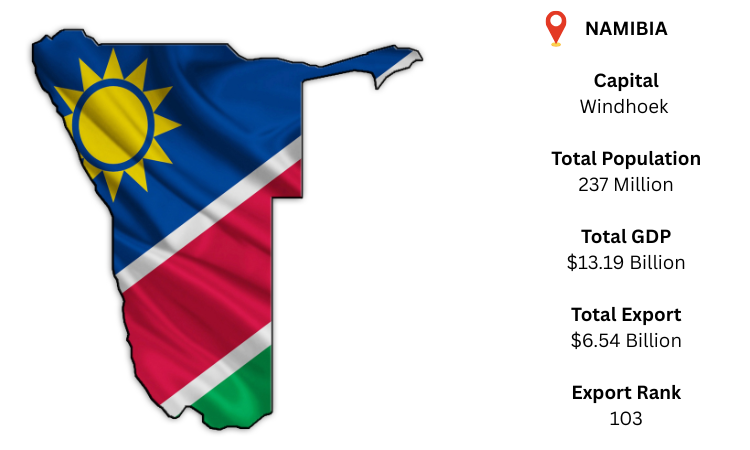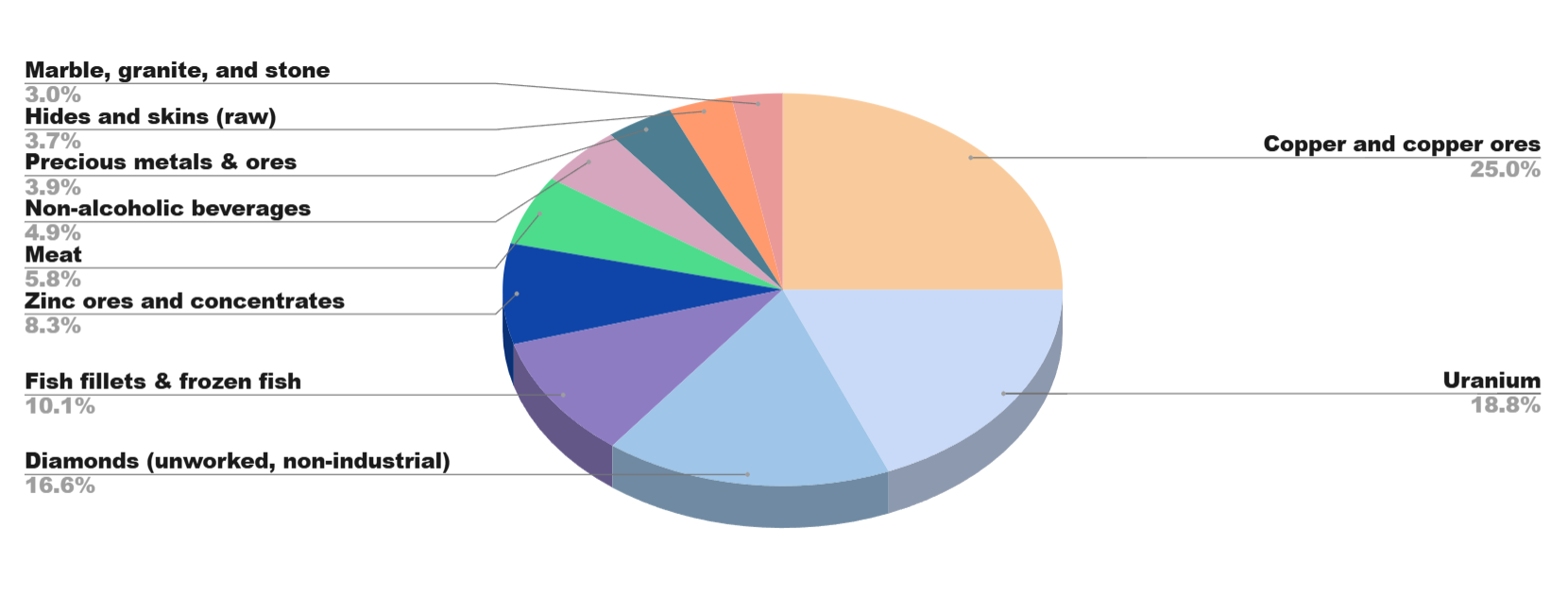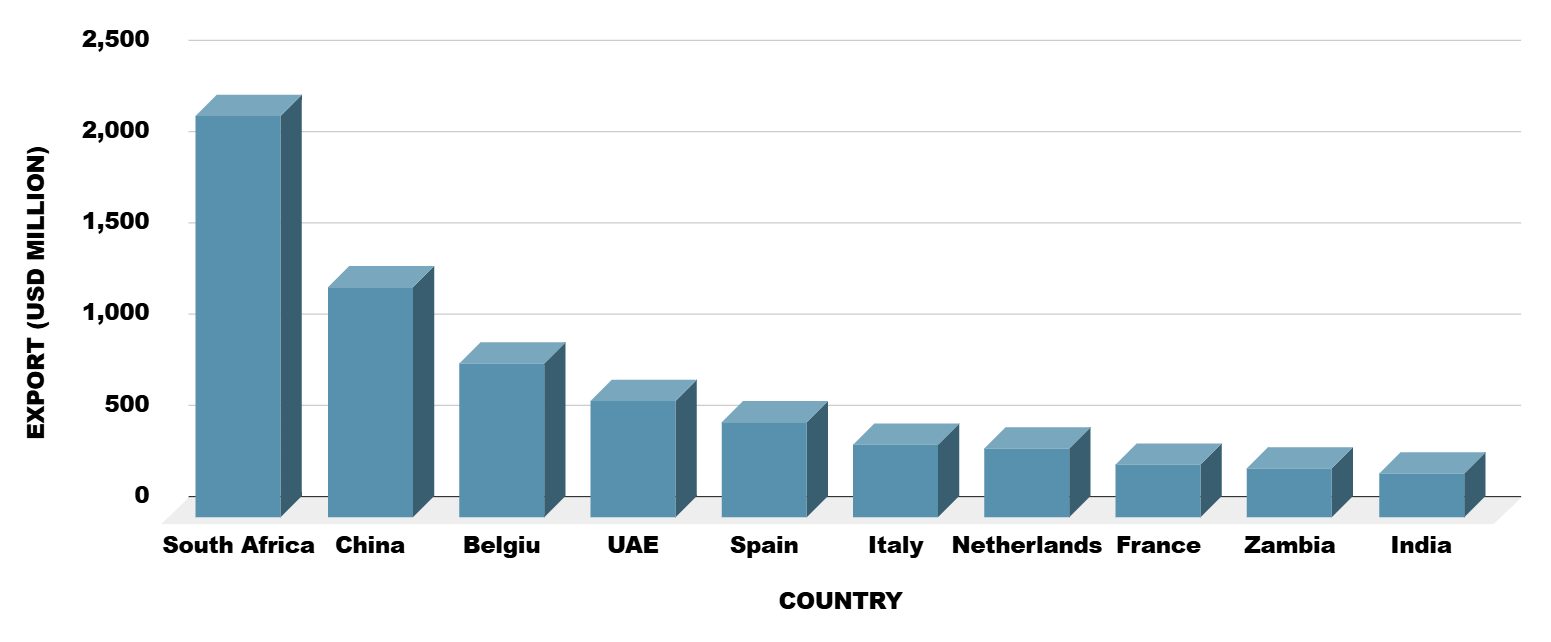Namibia is a country in southwest Africa that shares borders with South Africa, Botswana, Zambia, and Angola. It also has an Atlantic Ocean coastline. Windhoek is its largest city and capital. Namibia's GDP was at USD 13.19 billion in 2024. The nation contributes around 0.2% of the world's total export volume, placing it about 118th in the world. In 2024, as per the Namibia export data, Namibia's overall export value was around USD 6,540 million. About 40.9% of exports, or USD 2,240 million, are made up of pearls, precious stones, and metals, particularly diamonds (HS 71). China, South Africa, and Botswana are Namibia's biggest export markets as per Namibia Export Data.
Although new offshore oil and gas finds are starting to diversify Namibia's export base, as per Namibia trade data, the country's economy still mostly depends on mining and natural resources.



